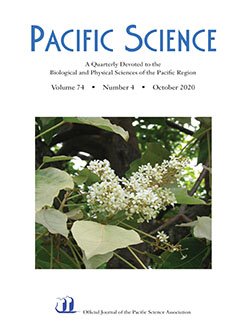The African tulip tree Spathodea campanulata is a major invasive species on the island of Tahiti (French Polynesia), where it has established from sea level up to montane cloud forest. This invader continues to spread across the island; however, little information is available about the seed rain and germination rate of Spathodea seeds. In this study, we quantified seed rain of Spathodea, estimated potential seed dispersal distances, and determined temperatures required for seed germination. Seed traps were positioned in a Spathodea-dominated forest and monitored over 86 days during the seed-fall period. The cumulative seed rain generated a density of 289 Spathodea seeds per square meter with a mean daily frequency of 3.3 seeds/m2 in the plot. Based on seed production estimates from canopy pod counts, we inferred that many Spathodea seeds were dispersed away from the plot, rather than being deposited locally in the Spathodea invaded plot. A simple dispersal model indicated that seeds from a single tree perched on a steep precipice are capable of dispersing across the entire island of Tahiti during strong trade winds. Laboratory germination tests of freshly collected seeds showed that the maximum germination (100%) was obtained at 25 °C while 96% germination was observed at 20 °C; however, no germination was observed at 15 °C or 12 °C after 34 days. Thus, Spathodea invasion in Tahiti may currently be limited to elevations <1,500 m due to lack of germination at cooler temperatures. The large number of seeds per adult Spathodea as well as the seed dispersal ability and high rate of germination may provide an important establishment advantage to Spathodea in the tropical rainforests of Tahiti. We unexpectedly found that 61% of Spathodea seeds that fell in seed traps were depredated before falling in the traps. It is not known whether this predispersal seed predation has reduced Spathodea's rate of spread in Tahiti.
How to translate text using browser tools
8 March 2021
Seed Rain, Dispersal Distance, and Germination of the Invasive Tree Spathodea campanulata on the Island of Tahiti, French Polynesia (South Pacific)
Sébastien Larrue,
Jean-Yves Meyer,
Boris Fumanal,
Curtis Daehler,
Julien Chadeyron,
Maurille Flores,
Lucas Mazal
ACCESS THE FULL ARTICLE

Pacific Science
Vol. 74 • No. 4
October 2020
Vol. 74 • No. 4
October 2020
African tulip tree
biological invasion
seed dispersal
Society Islands




